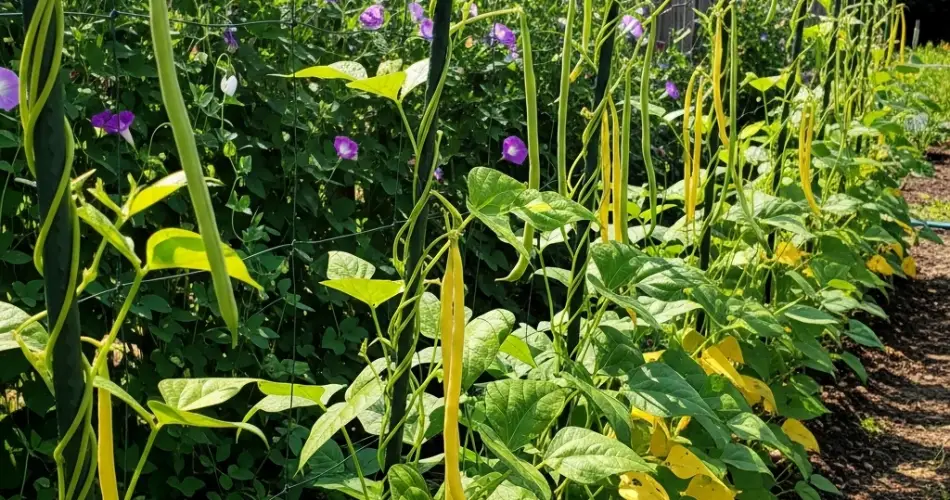String beans—also known as green beans or snap beans—are a rewarding crop for home gardeners. They’re easy to grow, quick to mature, and packed with nutrients. Whether you’re growing bush varieties or pole beans, providing the right nutrients at the right time plays a crucial role in maximizing yield and ensuring vigorous, healthy plants.
Fertilizing string beans correctly doesn’t require complicated formulas or chemicals. In fact, over-fertilization can be just as damaging as nutrient deficiencies. This guide breaks down when, how, and what to feed your string bean plants to keep them thriving from seed to harvest.
Understanding String Bean Nutritional Needs
Before applying any fertilizer, it’s important to understand the specific needs of string bean plants. Unlike heavy feeders like tomatoes or corn, beans are considered light feeders and even have a special ability: they fix nitrogen from the air through a symbiotic relationship with soil bacteria called Rhizobium.
This means that while beans do need nutrients, particularly during early growth, they generally require less nitrogen than many other vegetables. In fact, applying too much nitrogen can lead to lush, leafy plants with few or no beans.
Before Planting: Preparing the Soil
A healthy bean plant starts with nutrient-rich, well-draining soil.
Steps to prepare the soil:
-
Mix in compost or well-rotted manure a few weeks before planting to enrich the soil with organic matter.
-
Beans prefer a slightly acidic to neutral pH (6.0 to 7.0), so test your soil if possible.
-
Avoid high-nitrogen fertilizers at this stage—what beans need more is phosphorus and potassium to encourage root development and flowering.
You can also dust the seeds with Rhizobium inoculant (available at garden centers) before planting to help establish beneficial nitrogen-fixing bacteria in the soil.
Early Growth Stage: Light Feeding
When the seedlings are about 3–4 inches tall and have developed their first true leaves, a light feeding can support continued growth.
Recommended fertilizer types:
-
A balanced organic fertilizer (such as 5-5-5 or 10-10-10) applied at half strength.
-
A phosphorus-rich fertilizer (like bone meal or rock phosphate) to promote strong root systems.
-
Compost tea or worm castings as a gentle, slow-release boost.
Apply fertilizer around the base of the plant (not directly on the stem), and water it in well to help the nutrients reach the roots.
Mid-Season: Support During Flowering and Pod Development
The most critical time to feed your beans is when they begin to flower and form pods. This is when the plants need a steady supply of nutrients to support fruit development without over-stimulating leaf growth.
Ideal fertilizers at this stage:
-
Low-nitrogen, high-phosphorus blends (like 5-10-10) to support blooming and pod formation.
-
Kelp meal or liquid seaweed to encourage flowering and improve plant resilience.
-
Banana peel compost tea, which is rich in potassium and promotes pod development.
Feed your beans every 2–3 weeks during this period, keeping an eye on plant health and adjusting based on how the beans are growing.
Signs Your Beans Need More Nutrients
Even with a good routine, plants may occasionally show signs of stress or deficiencies. Watch for:
-
Yellowing leaves – could indicate a lack of nitrogen early on, or overwatering.
-
Stunted growth – may be due to poor soil fertility or compacted soil.
-
Few flowers or pods – often a result of excess nitrogen or lack of phosphorus.
-
Pale or curled leaves – possible micronutrient deficiency or pest issue.
Adjust your feeding schedule accordingly and consider a soil test if problems persist.
Tips for Successful Fertilization
-
Water before fertilizing to prevent root burn.
-
Mulch around the plants to retain moisture and slowly release nutrients as organic mulch breaks down.
-
Avoid granular chemical fertilizers unless necessary—string beans respond best to organic and slow-release feeding methods.
-
Rotate crops each year to prevent soil depletion and reduce disease risk.
-
Don’t overfeed! Over-fertilizing, especially with nitrogen, leads to excessive foliage at the expense of bean production.
Natural Fertilizer Alternatives
If you prefer a more sustainable approach, try these organic options:
-
Banana peel compost tea for potassium
-
Crushed eggshells for calcium
-
Wood ash for potassium and pH balancing (use sparingly)
-
Diluted fish emulsion as an all-purpose liquid fertilizer
These alternatives are especially useful in container gardening, where nutrients can leach out more quickly.
Final Thoughts
Fertilizing string beans is more about balance than quantity. A little support at the right time goes a long way in helping your plants produce an abundant harvest. By enriching the soil before planting, providing targeted feeding during flowering, and avoiding excessive nitrogen, you’ll create the perfect conditions for your string bean plants to flourish.
With the right nutrients and a bit of attention, your garden will soon be filled with crisp, flavorful green beans ready for picking.



